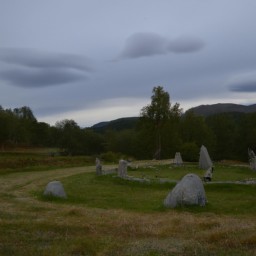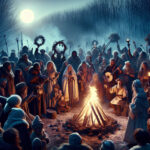Norway is one of the oldest countries in Europe and its history is rich in pagan tradition. With the advent of Christianity, many of the old pagan sites were changed or destroyed, but some of them have managed to survive to this day. In this article, we will take a look at some of the most famous pagan sites in Norway and explore their significance to the country’s history and culture.
Norway is home to a wide variety of pagan sites, most of which date back hundreds of years. These sites have been used for a variety of pagan ceremonies, rituals, and other activities. From the Viking Age to the present, Norway’s pagan sites have been an important part of the country’s history and culture. Here is a closer look at some of the most popular Norwegian pagan sites.
Haugar Vestfold
Haugar Vestfold is one of the most important pagan sites in Norway. It is located in Tønsberg, and dates back to the Viking Age. The site is believed to have been used for religious ceremonies and other pagan rituals. It is now a protected area and is open to the public for viewing.
Alfheim
Alfheim is one of the oldest pagan sites in Norway, dating back to the Iron Age. Located in Ås, this site is believed to have been used for pagan rituals and ceremonies. It is now a protected area and is open to the public for viewing.
Oseberg Ship Burial
The Oseberg Ship Burial is one of the oldest and most significant Viking burial sites in Norway. This site dates back to the 9th century and is believed to have been used for pagan rituals and ceremonies. It is now a protected area and is open to the public for viewing.
Gokstad Mound
The Gokstad Mound is another important Viking burial site in Norway. This site dates back to the 9th century and is believed to have been used for pagan rituals and ceremonies. It is now a protected area and is open to the public for viewing.
Vigeland Sculpture Park
The Vigeland Sculpture Park is one of the most popular pagan sites in Norway. Located in Oslo, this site dates back to the early 20th century and is believed to have been used for pagan rituals and ceremonies. It is now a protected area and is open to the public for viewing.
Ullandhaug
Ullandhaug is one of the largest pagan sites in Norway. Located in Stavanger, this site dates back to the Iron Age and is believed to have been used for pagan rituals and ceremonies. It is now a protected area and is open to the public for viewing.
Kaupang
Kaupang is the oldest known Viking trading post in Norway. This site dates back to the 9th century and is believed to have been used for pagan rituals and ceremonies. It is now a protected area and is open to the public for viewing.
Kon-Tiki Museum
The Kon-Tiki Museum is a unique museum in Oslo dedicated to the life and times of Norwegian explorer and adventurer, Thor Heyerdahl. This museum houses a variety of artifacts from Heyerdahl’s expeditions, including items related to pagan religion and ceremonies.
Nidaros Cathedral
Nidaros Cathedral is one of the most important churches in Norway. Located in Trondheim, this site dates back to the 12th century and is believed to have been used for pagan rituals and ceremonies. It is now a protected area and is open to the public for viewing.
Norway is home to a wide variety of pagan sites, each with its own unique history and significance. From Viking burial sites to modern museums, Norway’s pagan sites provide a fascinating look into the country’s past. Whether you’re interested in learning more about Norway’s pagan history or just want to explore some of the country’s most beautiful sites, Norway’s pagan sites are sure to provide an unforgettable experience.

Norway’s pagan sites are a testament to the country’s long and varied history. From the ancient burial mounds of the Iron Age to the Viking-era burial sites, these sites offer a unique glimpse into the past. They also provide an opportunity to explore the country’s spiritual heritage and to appreciate the importance of preserving these ancient sites for future generations. It is important to remember that these sites are not only a part of Norway’s past, but also a part of its present and future. By understanding and protecting these sites, we can ensure that Norway’s pagan heritage continues to live on for generations to come.





